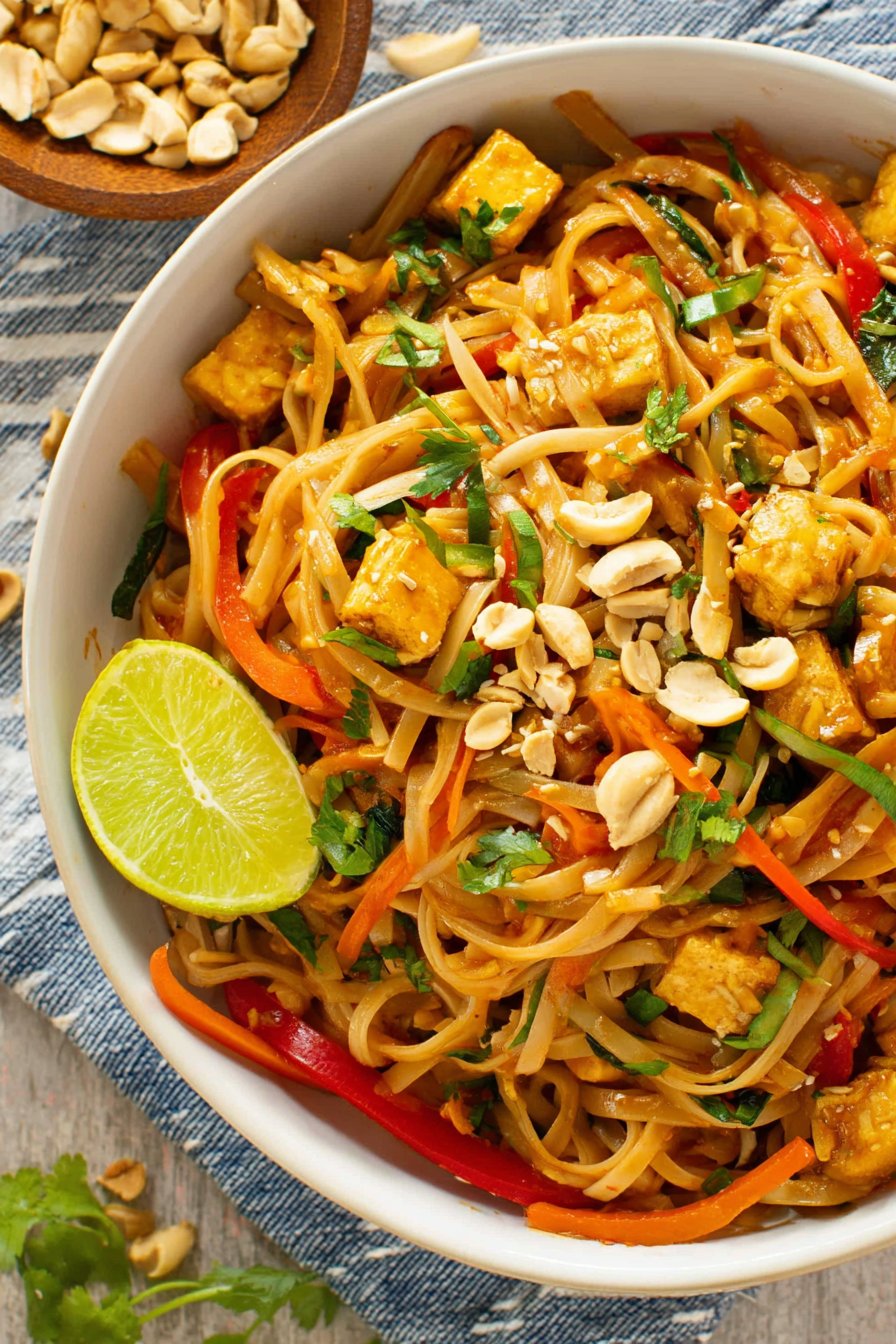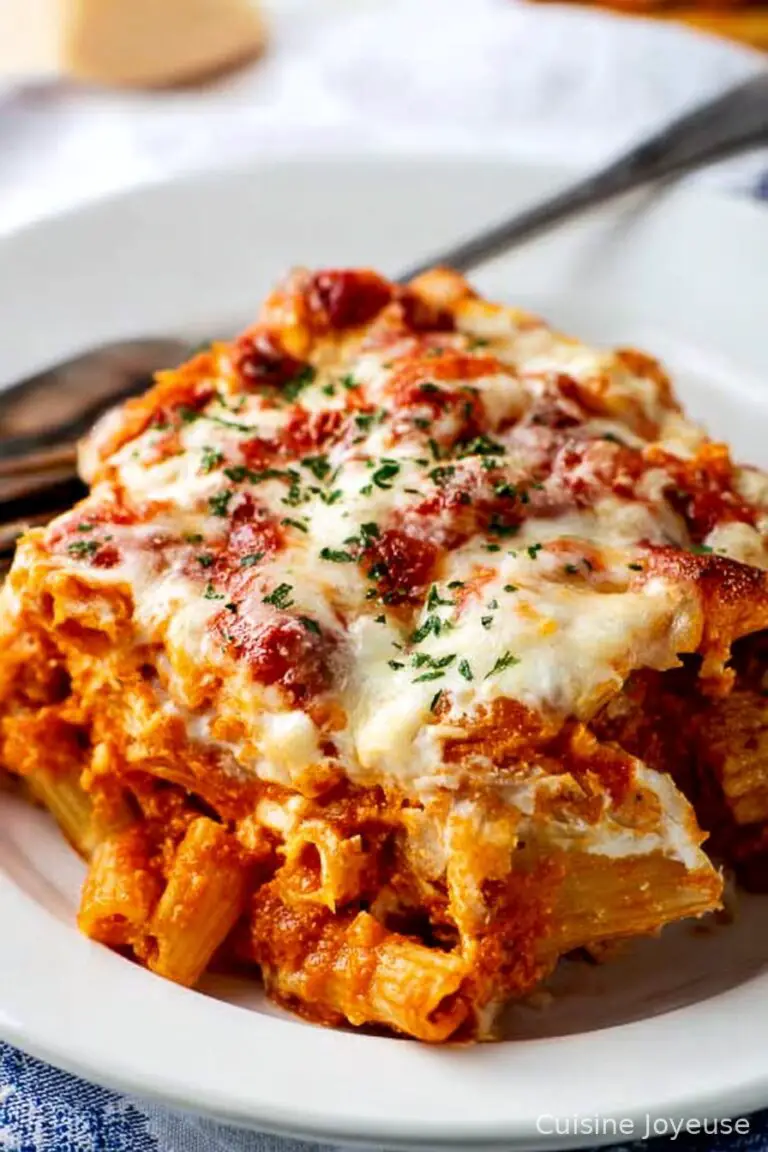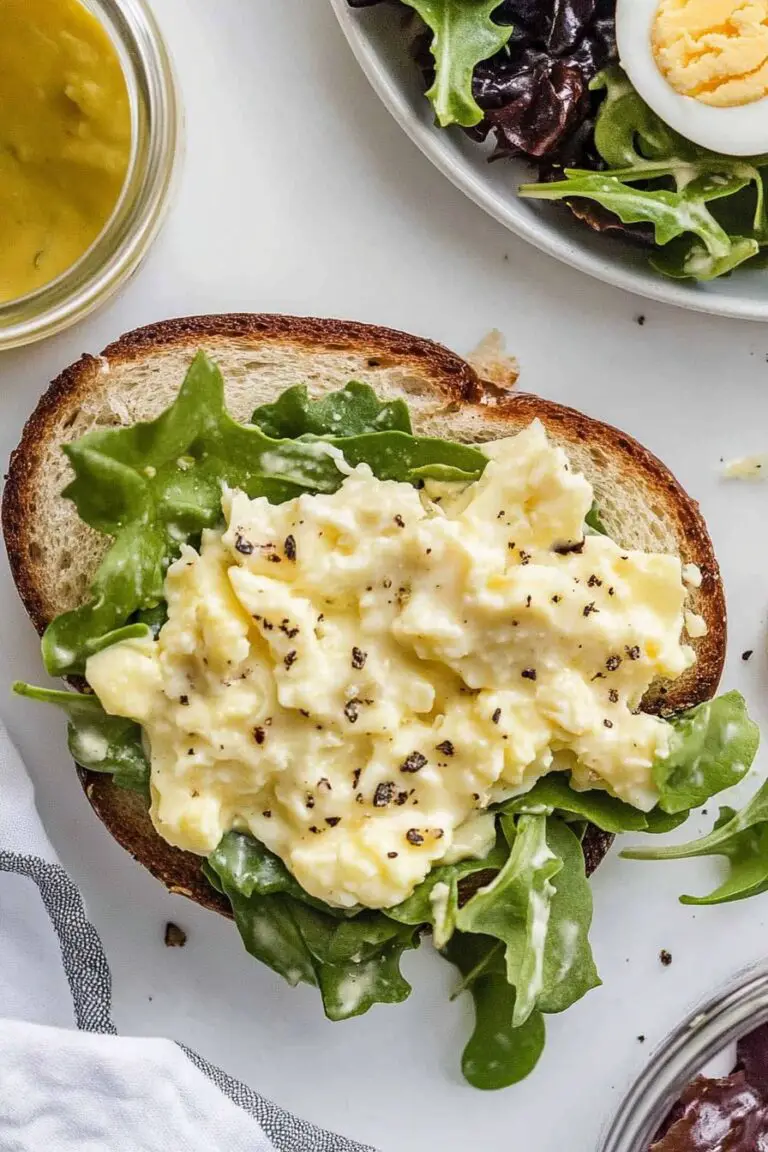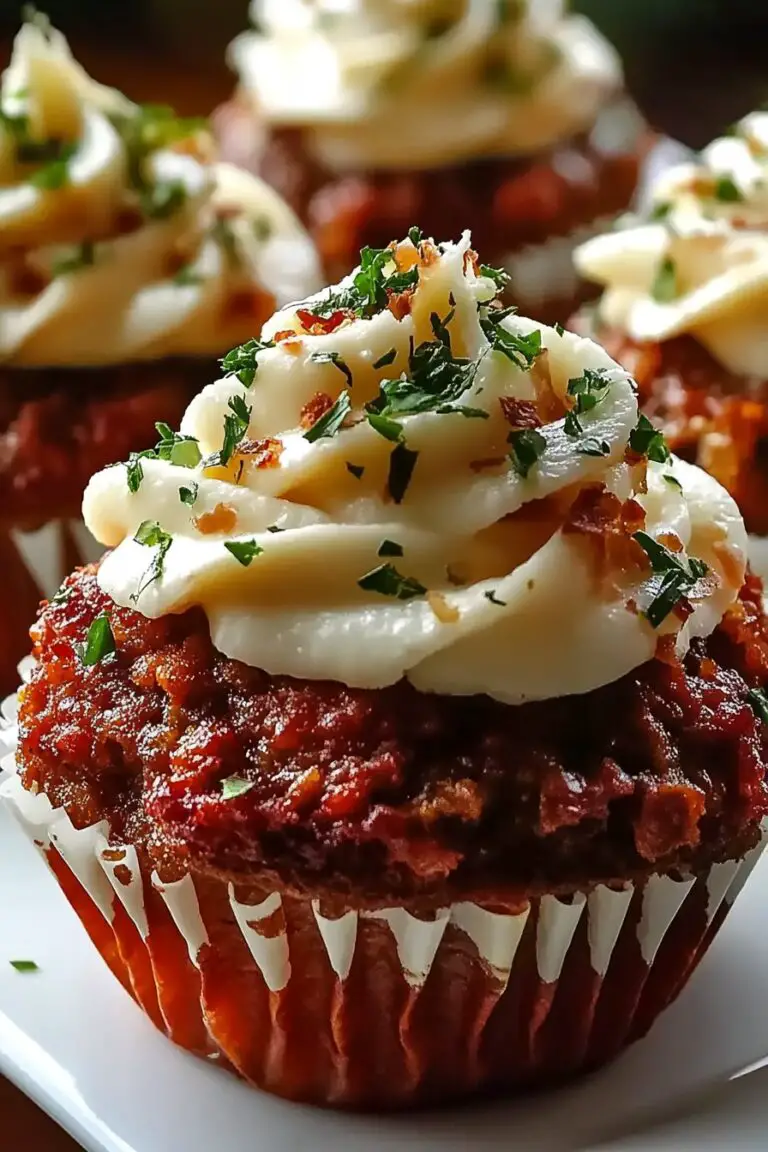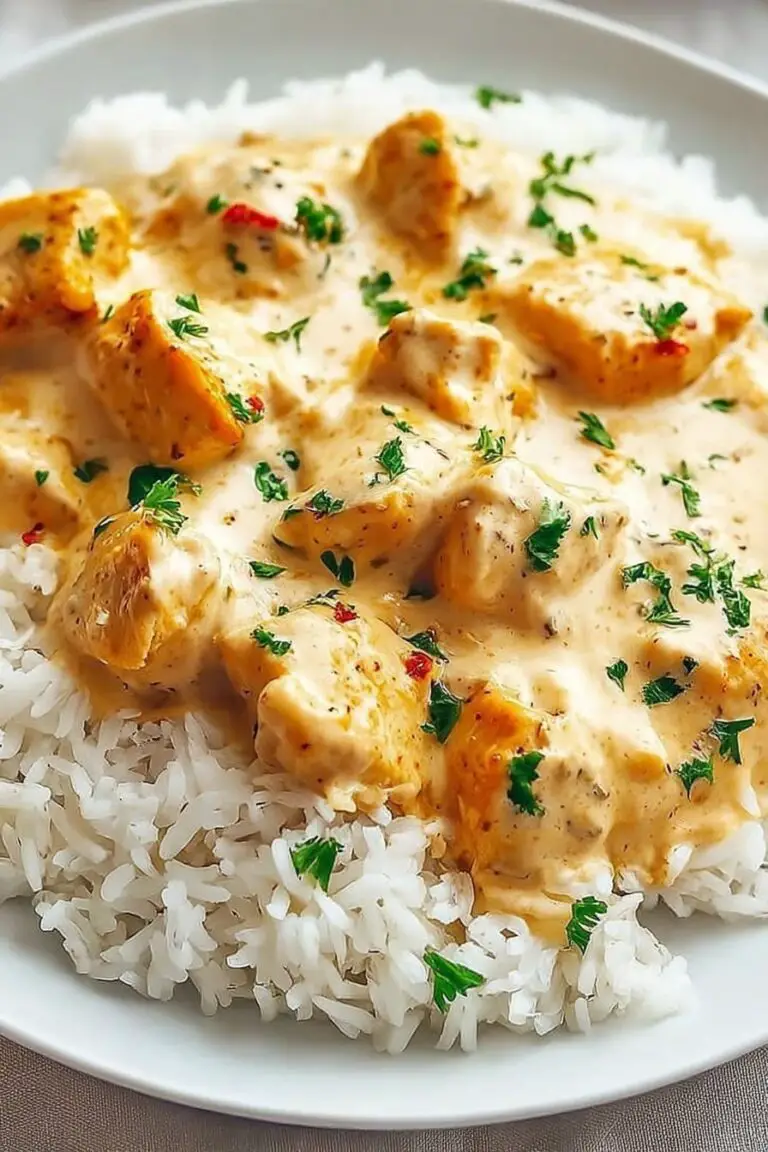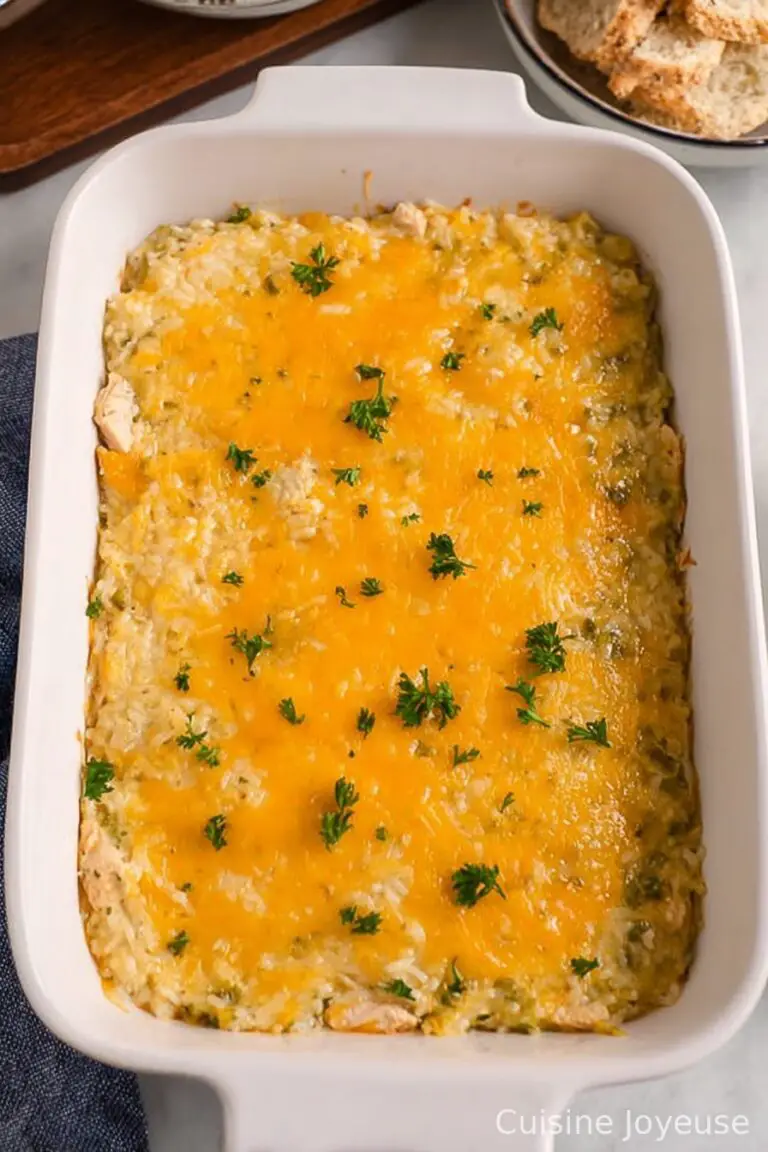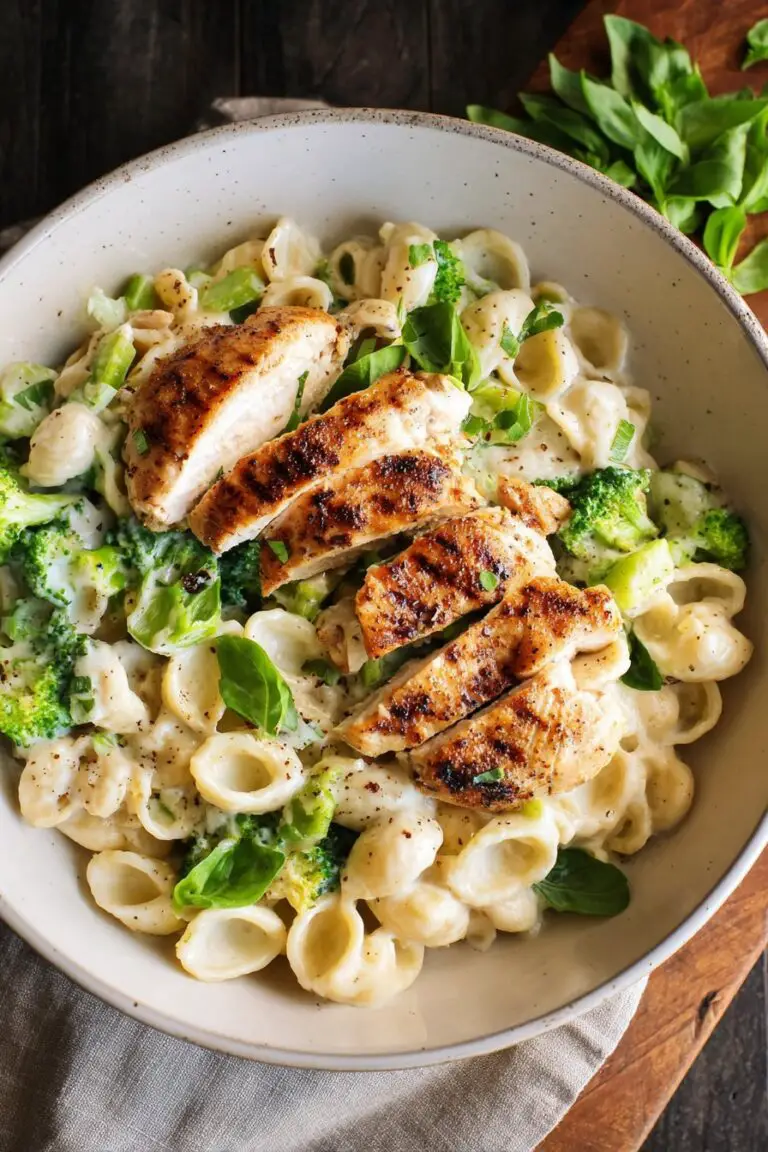Vegan Pad Thai
Catching Up Over Noodles: My Vegan Pad Thai Story
Let me tell you, the first time I tried to make Pad Thai at home, it was a bit of a circus. I didn’t even have proper rice noodles, so I just grabbed spaghetti and hoped for the best (spoiler: not quite the same, but edible). Now, after a handful of noodle mishaps and a kitchen that once smelled like burnt peanuts for a week, I’ve finally got my groove. This Vegan Pad Thai is the one I make when I need something quick, tangy, and honestly, downright comforting. My partner once called it “better than takeaway,” which is probably the nicest thing he’s said about my cooking all year. Also, if you ever find yourself singing along to 90s hits while stirring sauce, well, you’re in good company!
Why I Keep Coming Back to This Recipe
I make this when I’ve got a bunch of veggies hanging around that are about to go dodgy, or if I’m craving something a bit special but don’t want to do a big shop. My family goes absolutely mad for this (even my niece, who claims carrots are “suspicious”). It’s ridiculously flexible—once I even tossed in leftover roasted broccoli, and no one batted an eye. The real clincher? You don’t need anything fancy, unless you count a lime as fancy, which I sort of do. The only thing that used to trip me up was the sauce, but after a few batches that tasted like straight-up vinegar, I’ve figured out a balance that doesn’t make your face pucker. Oh, and if you hate washing woks, you can totally get away with a big frying pan.
What You’ll Need (and a Few Cheeky Substitutes)
- 200g dried rice noodles (flat ones are best, but I’ve used vermicelli in a pinch. My grandmother swore by the Maesri brand, but honestly, whatever’s on offer works.)
- 2 tablespoons oil (sesame gives a nice kick, but regular veg oil is fine)
- 3 cloves garlic, minced (I sometimes add more if I’m feeling bold)
- 1 small red onion, sliced thin (spring onion works, too)
- 1 cup firm tofu, cubed (if you’re out, edamame is surprisingly decent)
- 1 cup bean sprouts (I skip these when I can’t find fresh)
- 1 large carrot, julienned (or just cut it however—no one will mind)
- 1 red bell pepper, thinly sliced (green is fine if you’re a rebel)
- 1/3 cup roasted peanuts, roughly chopped (I’ve used cashews, too, when I was out of peanuts—still tasty)
- Fresh coriander, a small handful, chopped (or basil, if you’re fancy)
- Lime wedges, for serving (but if you only have lemon, that works—just a bit less zingy)
For the Sauce:
- 3 tablespoons tamarind paste (in a real pinch, mix equal parts lime juice and brown sugar—it’s not the same, but it’s passable)
- 2 tablespoons soy sauce (or tamari, if you’re gluten-free)
- 1 tablespoon brown sugar (palm sugar is fancier, but I rarely have it)
- 1 teaspoon sriracha (add more, or less, depending if you like your food to fight back)
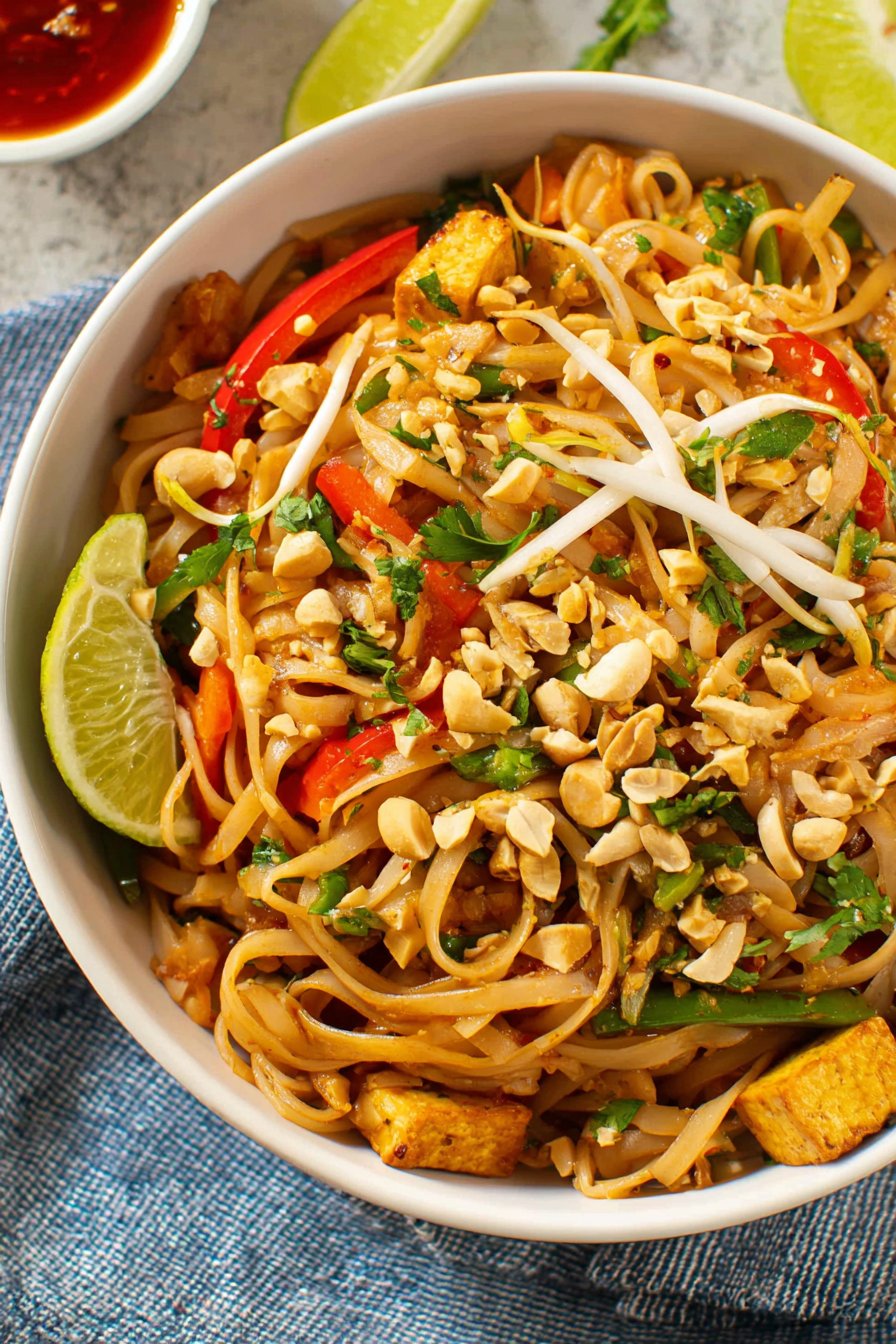
Let’s Make Vegan Pad Thai (No Stress!)
- Get those noodles ready. Soak your rice noodles in hot water for about 10 minutes, or until they’re bendy but not mushy. Drain ‘em and set aside. Sometimes I forget about them and they get a bit soft—just rinse with cold water and soldier on.
- Mix the sauce. In a bowl, whisk together tamarind paste, soy sauce, brown sugar, and sriracha. Taste it. Too tangy? Add a pinch more sugar. Not enough kick? More sriracha. This is where I sneak a spoonful. (Too many times, if I’m honest.)
- Cook the tofu. Heat 1 tablespoon oil in your wok or frying pan over medium-high. Toss in the tofu cubes and fry until golden on all sides. I usually get impatient, but honestly, giving it a few extra minutes is worth it for that crispy outside. Remove tofu and set aside.
- Veggie time. Add the rest of the oil, then garlic and onion. Fry for a minute (or two, if you like it soft). Then, in go the carrots and bell pepper. Stir-fry until just tender. Don’t worry if it looks a bit crowded or awkward—mine always does at this point.
- Noodles + sauce = magic. Throw the drained noodles in with the veg. Pour over your sauce. Use tongs (or two forks, if your tongs mysteriously disappeared like mine did last year) to toss everything together. It’ll look weirdly gloopy at first—trust the process.
- Add tofu back. Toss in the crispy tofu, most of the bean sprouts, and half the peanuts. Give it all a final toss.
- Serve it up! Plate it, scatter with coriander, the rest of your peanuts, some extra bean sprouts, and—if you’re like me—a mountain of lime wedges. Take a photo if you’re into that sort of thing. Then eat before someone else does.
Lessons Learned (Notes from Many Noodle Nights)
- If your noodles get sticky, a splash of hot water when tossing helps. I learned this the hard way after prying apart a noodle brick.
- Don’t skimp on the lime. It honestly ties the whole thing together (I’ve even used it straight from the fridge, still cold, and it’s fine)
- If you overdo the soy sauce, just balance with a bit more sugar and lime. Or eat it saltier. I won’t judge.
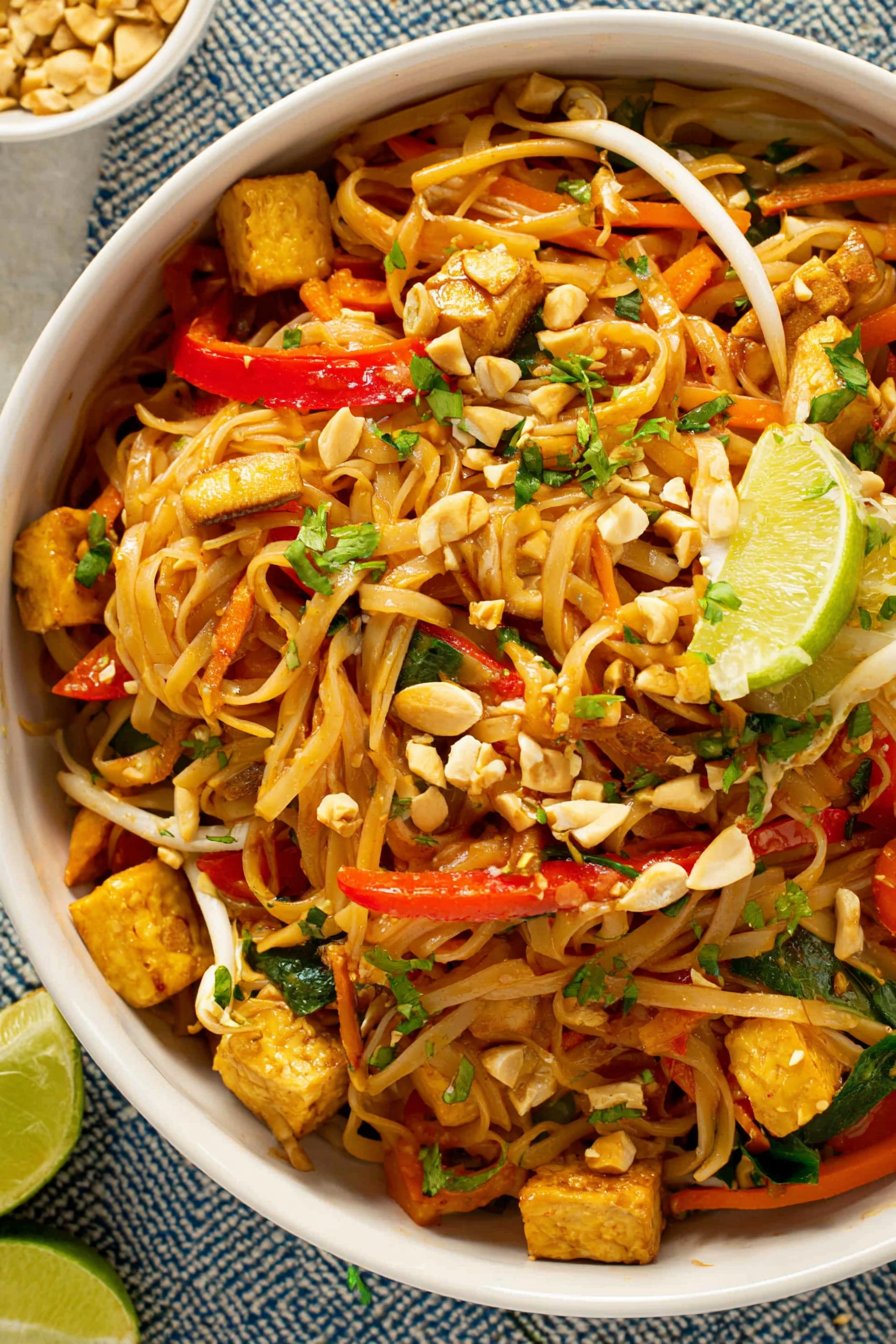
Variations I’ve Actually Tried (and One That Flopped)
- Tried it with spiralized zucchini instead of noodles—surprisingly good, but not filling enough for my husband.
- Added pineapple chunks once for a sweet kick—would probably do that again, but maybe not on a first date.
- Attempted to use almond butter in the sauce, thinking it’d be “fusion”—it just got weird and sticky (wouldn’t recommend, but hey, you do you).
No Wok? No Worries—Equipment Talk
So, a wok is great, but if you’ve only got a big pan, that works just fine. Honestly, I’ve even used an ancient cast iron skillet once, though it’s a bit heavy for tossing noodles (my wrist was not amused). And if your only tongs are missing (like mine seem to be every few months), two forks and a bit of determination do the job.
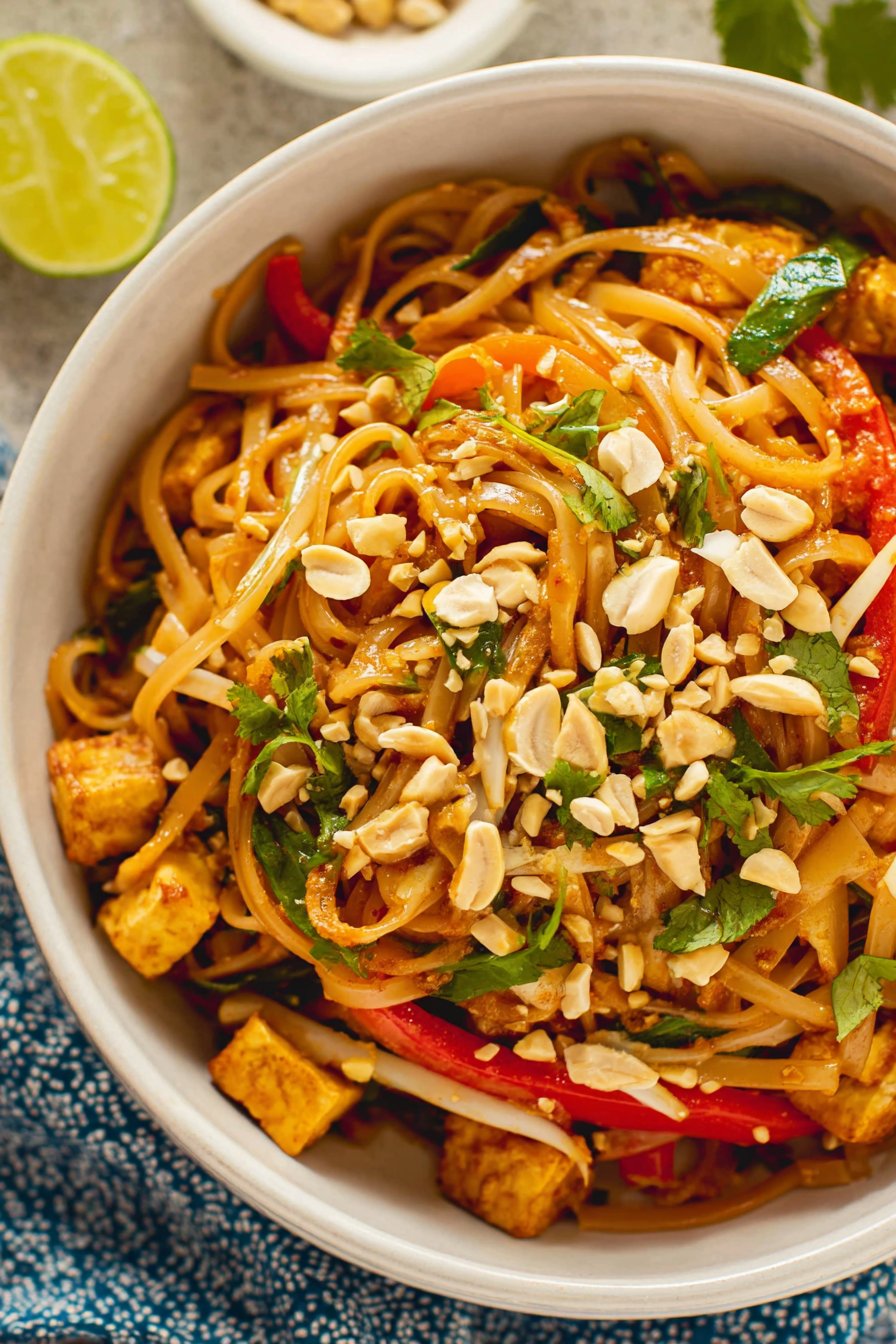
How to Store It (But It’s Usually Gone Fast)
Alright, you can keep leftovers in an airtight container in the fridge for up to 2 days. It reheats pretty well (the flavors settle in more, maybe even better than fresh, I think). Just don’t try to freeze it—rice noodles go odd and rubbery, trust me. Though honestly, in my house it never lasts more than a day!
How I Like to Serve It (And a Family Habit)
I like mine with an extra squeeze of lime and a little heap of coriander on top. My family insists on a side of cucumber slices (no idea why, but it’s tradition). Sometimes, I set out a little bowl of extra sriracha for the heat-seekers. And every now and then, someone requests a fried shallot sprinkle, which I only do if I’m feeling very organized (so, like, once a year).
Stuff I’ve Learned the Hard Way (Pro Tips)
- Once, I tried to speed up soaking the noodles by boiling them. Nope—turned into a mushy mess. Cold water, a bit of patience, every time.
- If you dump all the sauce in at once, sometimes it pools at the bottom. Better to pour, toss, pour again. Actually, I find it works better if you add it in stages.
- Don’t walk away “just for a sec” while frying tofu. It’s like the universe knows you’ve left, and that’s when it burns.
FAQ (Honestly, Some of These Made Me Laugh)
- Can I use peanut butter instead of peanuts? Sure, but thin it out first. I did a straight peanut butter swap and ended up with a sticky, weird clump. If you want a peanutty sauce, this recipe does that well.
- Can I make it gluten-free? Yes! Just use tamari instead of soy sauce, and double-check your noodles. Some brands sneak in wheat (annoying, I know).
- Is this spicy? A little, but only if you want it to be. My mum can’t handle much heat, so I leave out the sriracha and let everyone add their own at the table.
- What if I can’t find tamarind paste? Mix lime juice with brown sugar. Not perfect, but close enough. Or check your local Asian grocery—they almost always have it, hiding in some mysterious corner.
- How do you keep tofu from sticking? Make sure your pan is hot, and don’t move the tofu too soon. Or just embrace the sticky bits—they taste good anyway.
And before I forget, if you’re into learning more about Thai ingredients, Pailin’s Thai Kitchen is a fantastic (and genuinely charming) resource.
I’m always finding new ways to mess up and fix this recipe, so if you try anything bonkers (or if you just want to chat about the glory of noodles), let me know! Happy cooking—don’t forget to cue up your favorite playlist, it really does help.
Ingredients
- 200 g rice noodles
- 200 g firm tofu, cubed
- 2 tablespoons vegetable oil
- 1 cup bean sprouts
- 1 red bell pepper, thinly sliced
- 3 green onions, sliced
- 2 cloves garlic, minced
- 1/4 cup roasted peanuts, chopped
- 2 tablespoons tamarind paste
- 2 tablespoons soy sauce
- 1 tablespoon maple syrup
- 1 lime, cut into wedges
- Fresh cilantro, for garnish
Instructions
-
1Cook the rice noodles according to package instructions. Drain and set aside.
-
2In a small bowl, whisk together tamarind paste, soy sauce, and maple syrup to make the sauce.
-
3Heat vegetable oil in a large skillet or wok over medium-high heat. Add tofu cubes and cook until golden on all sides, about 5 minutes.
-
4Add garlic, red bell pepper, and green onions to the skillet. Stir-fry for 2-3 minutes until vegetables are slightly tender.
-
5Add the cooked noodles and sauce to the skillet. Toss everything together and cook for another 2-3 minutes until heated through.
-
6Remove from heat and stir in bean sprouts. Serve topped with chopped peanuts, fresh cilantro, and lime wedges.
Approximate Information for One Serving
Nutrition Disclaimers
Number of total servings shown is approximate. Actual number of servings will depend on your preferred portion sizes.
Nutritional values shown are general guidelines and reflect information for 1 serving using the ingredients listed, not including any optional ingredients. Actual macros may vary slightly depending on specific brands and types of ingredients used.
To determine the weight of one serving, prepare the recipe as instructed. Weigh the finished recipe, then divide the weight of the finished recipe (not including the weight of the container the food is in) by the desired number of servings. Result will be the weight of one serving.
Did you make this recipe?
Please consider Pinning it!!

